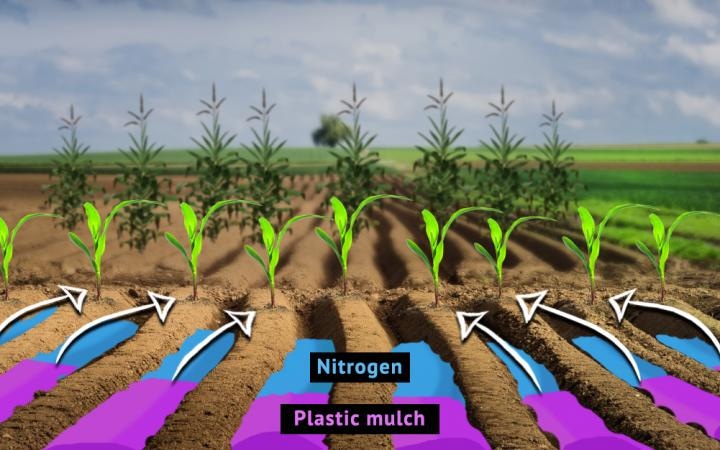Jan 16 2019
The element nitrogen is present in organic compounds such as proteins, chlorophyll, enzymes, and hormones that are of utmost significance for plants. The lack of nitrogen in plants leads to slow down in their growth, paler leaves, thin stems, and reduction in the yield.
 The efficiency of the procedure turned out to depend on the part of the bed (the furrow or the ridge) that was fertilized. (Image credit: Allen Dressen)
The efficiency of the procedure turned out to depend on the part of the bed (the furrow or the ridge) that was fertilized. (Image credit: Allen Dressen)
Agriculturists use nitrogen fertilizers to increase the yield. Yet, a very high level of nitrogen in the soil results in the release of nitrogen in the form of ammonia, laughing gas, and other gases that lead to atmospheric pollution. One way of optimizing nitrogen consumption and preventing its loss, even in the gas form, is plastic mulching.
However, researchers are yet to analyze this technique from the scientific point of view. For the first time, a RUDN pedologist and his co-workers from China and the United Kingdom have described the best conditions for combined use of nitrogen and plastic mulching.
Plastic mulching was suggested by Chinese agriculturists four decades ago. The mulching retains moisture in place and is specifically effective in dry areas. In spite of being in practical use for nearly five decades, it was still obscure how it should be combined with nitrogen-containing fertilizers.
RUDN pedologists discovered that not only the content and amount of fertilizers affected the efficiency but also the part of the bed to which they are applied. The researchers carried out experiments in the Loess Plateau, an ancient agricultural region in Central China, and found out the most optimal technique—of adding the mulching and nitrogen-containing fertilizers to the ridge only after tilling the soil.
The researchers used three systems to perform a comparative experiment. The first system included a flat (not tilled) bed with plastic mulching. In the second and third systems, the soil was tilled before adding plastic mulching to the ridge between two furrows. In the second one, the fertilizer was also applied to the ridge. In the third system, it was added to the furrow. Corn was grown in all the three beds, and their yield was compared finally.
On average, the yield from the tilled land was 9.7% higher than that of the flat one, and the nitrogen consumption of plants was 72.5% higher. More fascinating was the comparison of the second and third systems. It was found that the ridges consumed the major share of nitrogen (96.5%), while the furrows seemed to be the main source of nitrogen loss. The movement of nitrogen from the ridges to the furrows and back was detected by the agriculturists. However, it was connected with the water movement in soil owing to the peculiarities of landscape and varying soil moisture under the plastic mulching and in its absence.
The results of the experiment lead us to an important conclusion: in order to increase the efficiency of nitrogen fertilization and to reduce environmental pollution with nitrogen compounds and erosion, fertilizers should be added to the ridges and combined with plastic mulching.
Yakov Kuzyakov, Study Co-Author, RUDN University